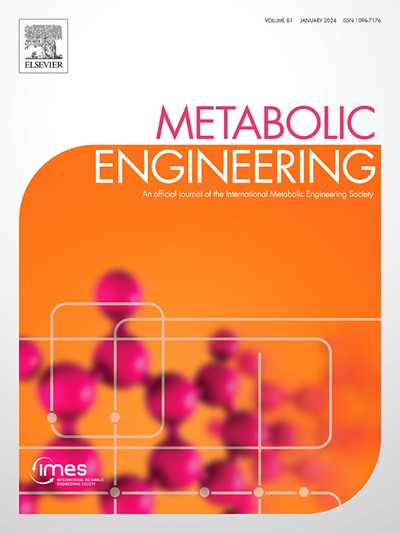Nucleotide distribution analysis of 5′UTRs in genome-scale directs their redesign and expression regulation in yeast
IF 6.8
1区 生物学
Q1 BIOTECHNOLOGY & APPLIED MICROBIOLOGY
引用次数: 0
Abstract
Non-conventional yeasts have emerged as important sources of valuable products in bioindustries. However, tools for the control of expression are limited in these hosts. In this study, we aimed to excavate the tools for the regulation of translation that are often overlooked. 5′UTR analysis of genome-scale annotated genes of four yeast species revealed a distinct decreasing ‘G’ frequency in −100 ∼ −1 region from 5040 5′UTRs in Komagataella phaffii. New 5′UTRs were regenerated by base substitutions in defined regions, and replacement of ‘G’ by ‘A’ or ‘T’ in the −50 ∼ −1 region highly facilitated gene expression. Preference analysis of all nucleotide triplets in 5′UTRs revealed a KZ3 (−3 ∼ −1) that dominantly affected gene expression. A total of 128 KZ3 variants were constructed to work with promoters of methanol-inducible PAOX1 and constitutive PGAP, of which 58 KZ3 variants increased gene expression and maximum difference in strength was 15-fold among all variants. Polysome profiling analysis clarified that 5′UTR-KZ3 enhanced gene expression at translational but not transcriptional levels. Finally, improved production of three industrial proteins and one platform compound were achieved by ready-made 5′UTR-KZ3 or in situ modification of the 5′UTR. This study provides new references and tools for the fine-tuning of translational regulation in yeast and other fungi.
酵母5'UTRs的基因组分布分析指导它们的再设计和表达调控。
非常规酵母已成为生物工业中有价值产品的重要来源。然而,用于控制表达的工具在这些宿主中是有限的。在本研究中,我们旨在挖掘经常被忽视的翻译调节工具。对4种酵母的基因组尺度注释基因的5′utr分析显示,与Komagataella phaffii的5040个5′utr相比,-100 ~ -1区域的‘G’频率明显降低。新的5‘ utr通过在特定区域的碱基替换再生,并且在-50 ~ -1区域用’A‘或’T‘替换’G'高度促进了基因的表达。对5' utr中所有核苷酸三胞胎的偏好分析显示,KZ3(-3 ~ -1)主要影响基因表达。利用甲醇诱导的PAOX1和组成型PGAP启动子构建了128个KZ3变异,其中58个KZ3变异增加了基因的表达,最大差异为15倍。多体分析表明,5'UTR-KZ3在翻译水平而非转录水平上增强了基因的表达。最后,通过现成的5'UTR- kz3或对5'UTR进行原位修饰,提高了3种工业蛋白和1种平台化合物的产量。该研究为酵母和其他真菌的翻译调控提供了新的参考和工具。
本文章由计算机程序翻译,如有差异,请以英文原文为准。
求助全文
约1分钟内获得全文
求助全文
来源期刊

Metabolic engineering
工程技术-生物工程与应用微生物
CiteScore
15.60
自引率
6.00%
发文量
140
审稿时长
44 days
期刊介绍:
Metabolic Engineering (MBE) is a journal that focuses on publishing original research papers on the directed modulation of metabolic pathways for metabolite overproduction or the enhancement of cellular properties. It welcomes papers that describe the engineering of native pathways and the synthesis of heterologous pathways to convert microorganisms into microbial cell factories. The journal covers experimental, computational, and modeling approaches for understanding metabolic pathways and manipulating them through genetic, media, or environmental means. Effective exploration of metabolic pathways necessitates the use of molecular biology and biochemistry methods, as well as engineering techniques for modeling and data analysis. MBE serves as a platform for interdisciplinary research in fields such as biochemistry, molecular biology, applied microbiology, cellular physiology, cellular nutrition in health and disease, and biochemical engineering. The journal publishes various types of papers, including original research papers and review papers. It is indexed and abstracted in databases such as Scopus, Embase, EMBiology, Current Contents - Life Sciences and Clinical Medicine, Science Citation Index, PubMed/Medline, CAS and Biotechnology Citation Index.
 求助内容:
求助内容: 应助结果提醒方式:
应助结果提醒方式:


